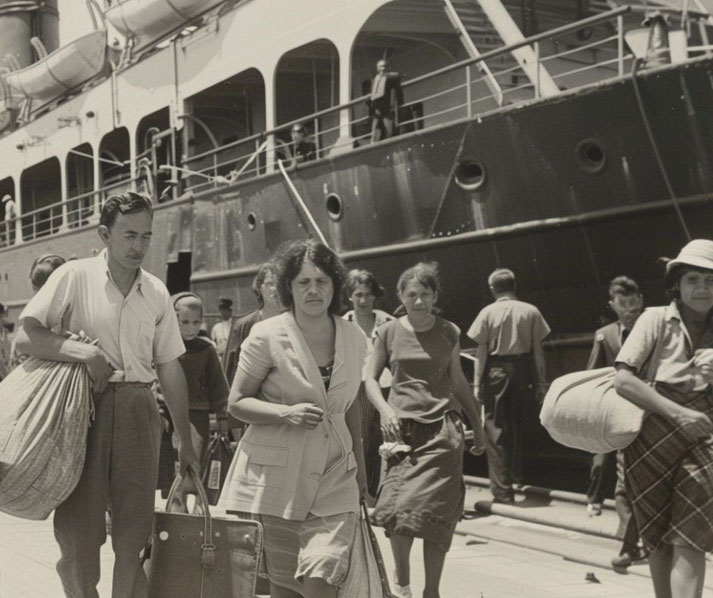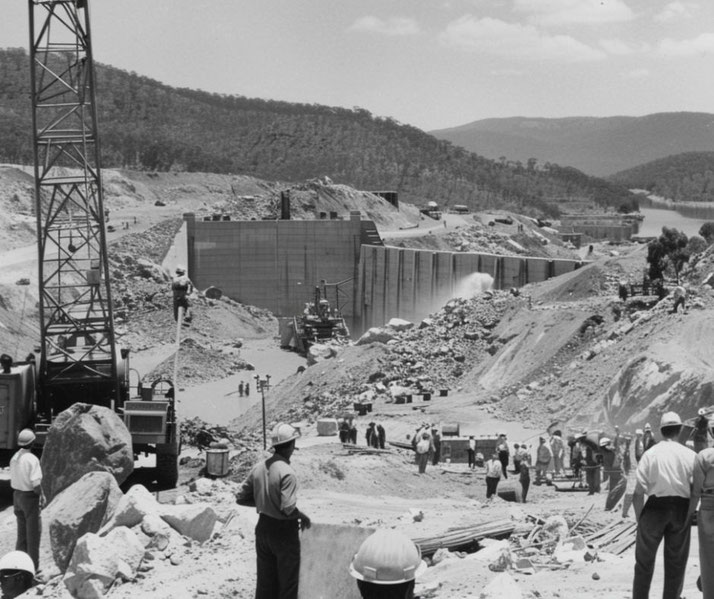Australia's desperate scramble to attract immigrants after the devastation of WWII

Australia faced a dramatic choice in the wake of World War II: find a way to grow its population or face potential annihilation.
The war had clearly exposed the nation's vulnerability, as its population of only 7.5 million was spread out thinly across a vast land.
As a result, the Australian government feared that without a significant population increase, Australia would never be able to defend itself or sustain its economy.
Consequently, the government launched an aggressive campaign to attract immigrants. Through bold programs like the Assisted Passage Migration Scheme and the Snowy Mountains Scheme, Australia set ambitious targets to bolster its population with people from all around the world.
Populate or perish
Unfortunately, for much of its history, Australia's attitude towards immigrants, especially those of non-white, non-British descent, wasn't always welcoming.
The country had always vocally sought to remain predominantly British in its culture.
As a result, Australia had developed strict immigration policies between 1901 and 1940, which made it almost impossible to enter the country if people weren't white and spoke English.
However, this began to change after the Second World War.
A key concept in Australia's post-war immigration policy was "Populate or perish".
This catchphrase, which often attributed to Arthur Calwell who was the Minister for Immigration from 1945 to 1949, articulated a new realisation: without a significant increase in population, Australia couldn't survive as a nation.
In 1947, Australia's population was around seven million. Given the country's massive size, this meant that there weren't enough people to defend against potential invaders or build a strong economy.
During the war, military planners had seen just how vulnerable Australia would be if invaded due to its low population density.
So, Calwell's solution was to stimulate immigration to Australia. For the first time, the government expressed willingness to accept immigrants from outside the British Isles.
He would primarily encourage other Europeans, particularly from southern and eastern Europe to move to Australia.
This was a significant step forward, given the deeply rooted racial prejudice in Australia at the time.
How did Calwell hope to attract migrants?
To make Australia an attractive option for potential migrants, incentives such as free or assisted passage, housing assistance, and employment assistance were offered.
This seemed to work. Between 1945 and 1961, over two million immigrants arrived in Australia.
Most were from Europe, as hoped, but many also came from Asia and other parts of the world.
to provide temporary accommodation and support services to new arrivals, Migrant hostels, such as the Bonegilla Migrant Reception and Training Centre in Victoria, were established.
Part of the initial influx of migrants was actually motivated by programs that were set up for displaced persons, like Holocaust survivors, and child migrants, such as war orphans from Britain.
This Displaced Persons Scheme, which was also introduced in 1947, brought over 170,000 European refugees to Australia by 1952.
It helped to address the humanitarian crisis in Europe post-World War II.

Arthur Calwell's influence
Arthur Calwell played a critical role in this process. He was a strong advocate for immigration, considering it essential for Australia's survival.
Calwell worked to dismantle restrictions placed on certain groups, like Jews and Catholics, during the war, making it easier for them to immigrate to Australia.
He set a goal of increasing the population by one percent annually through immigration.
As part of his initiatives, the Good Neighbour Movement was established in 1949.
This involved volunteers from the Australian community who wanted to assist immigrants in assimilate into Australian society.
Assisted Passage Migration Scheme
One of the most influential programs established after the war was the Assisted Passage Migration Scheme.
This scheme offered free or assisted passage to people from certain countries, including Britain, Italy, Greece, and Germany.
The Assisted Passage Migration Scheme was popularly known as the 'Ten Pound Poms' scheme, as British migrants could travel to Australia for only ten pounds.
It was designed to help financially struggling individuals who couldn't afford their passage to Australia.
Alos, the scheme provided employment and housing assistance upon arrival.
By 1952, about 170,000 people had specifically migrated to Australia under this scheme.
By the time the scheme ended in the 1980s, over one million people had arrived in Australia.
The Snowy Mountains Scheme
While previous efforts to attract migrants offered financial incentives, a new government project offered jobs for skilled workers.
The Snowy Mountains Scheme was one of the most ambitious engineering projects in Australian history.
This initiative involved the damming rivers major rivers in the Snowy Mountains region of New South Wales in order to build a massive series of hydroelectric power stations.
This would provide electricity for Australia's growing population and industries.
The project required a significant increase in people with the necessary construction skills.
As a result, it provided secure jobs for many immigrants, attracting over 100,000 people from around the world between 1949 and 1974.

The Queen's visit to Australia
In the middle of this influx of people into the country, Queen Elizabeth II visited Australia for the first time in 1954.
Prime Minister Robert Menzies played a significant role in this event. As the head of the Australian government, he orchestrated the state visit, ensuring it proceeded smoothly and successfully.
The Queen's visit was an important cultural moment, as many people began to feel that too much immigration would undermine Australia's British heritage.
So, when the British monarch made public appearances to large, cheering crowds, the Menzies' government hoped that it demonstrated Australia's elevated status within the international community.
As a result, Menzies, who was himself was a staunch monarchist, used the occasion to boost national morale and pride.
However, the Queen was also the head of the Commonwealth: a international collection of countries who were once ruled by Great Britain.
As the Commonwealth comprising many peoples of diverse cultural backgrounds, her visit also boosted morale among many of the immigrant groups.
Who was eligible for immigration?
Despite some loosening of restrictions, it wasn't entirely accurate to say that anyone who wished to come to Australia and had the means to do so could apply.
The White Australia policy, which had historically favoured immigrants from certain European countries, did remain in effect after World War II.
Although, thanks to Calwell's immigration initiatives, it began to be dismantled gradually in the late 1940s and 1950s.
However, it wasn't until 1973, with the full dismantling of the Immigration Restriction Act, that racial restrictions on immigration were officially
eliminated.
Regardless, the requirements for immigration, although less restrictive, did still exist.
Immigrants needed to be of 'good character' and have a job to go to. They were also required to be in good health and have enough money to support themselves.
If these criteria were met, then the process of immigrating to Australia was relatively straightforward.
Prospective immigrants would first need to obtain a visa from the Australian embassy in their home country and then book passage on a ship bound for Australia.
Upon arrival in the country, they would undergo a medical examination and be interviewed by an immigration officer.
If everything went well, they would be granted a permanent residency visa, allowing them to stay in Australia indefinitely.
How successful was post-war immigration?
From 1946 to 1960, the Australian population expanded at an average of 2.7% each year.
This might indicate a huge success for Calwell's 'populate or perish' scheme. However, this growth was also to a post-war baby boom among the Australia people.
Nevertheless, by 1960, Australia's total population was roughly 10.3 million people.
A decade later, by 1971, 20% of Australia's entire population was born overseas.
This was a much stronger indicator that immigration had been a great success for the Australian government.
Then, with a massive influx of migrants following the Vietnam War, this figure would continue to increase.
Today, Australia is a truly multi-cultural nation, with people from all over the world calling the country home.
What do you need help with?
Download ready-to-use digital learning resources
Copyright © History Skills 2014-2024.
Contact via email
With the exception of links to external sites, some historical sources and extracts from specific publications, all content on this website is copyrighted by History Skills. This content may not be copied, republished or redistributed without written permission from the website creator. Please use the Contact page to obtain relevant permission.





